Have you ever admired the impressive hairstyles of celebrities such as: super long pony tail of Ariana Grande or Cardi B’s colorful and sudden hair changes,…. ? Well, in fact, many of the gorgeous hair looks of a lot of celebrities from all backgrounds ( not just only singers) were largely supported with artificial hair integrations which is more commonly also known as hair extensions, hair weaves, wig, and fake hair.
So how well do you know artificial hair integrations? Did you know enough about various kinds of hair? Or how many types of methods to install and integrate fake hair? And many more questions on this topic will be all answered in this post. So now let’s learn more about the thing that might help you vary your stunning hair options!
What is artificial hair integrations?
A hair weave/ hair extension/ fake hair/ wig/ synthetic hair, refers to the use of human or artificial hair to blend with a person’s natural hair. This technique can temporarily or permanently transform one’s appearance by adding extra hair to their own or concealing their natural hair with human or synthetic hairpieces. By incorporating additional strands of human or synthetic hair, a weave can enhance the volume, length, and color of one’s hair without resorting to chemical treatments. It also allows individuals to experiment with different hair textures that differ from their own.
In the late 17th century, wigs of different styles and sizes gained popularity as a fashionable trend. However, it was not until the 1950s that hair weaves started to pique interest, initially being used mainly by celebrities. The era of “long, disco-haired” looks played a significant role in popularizing hair weaves, leading to their widespread adoption [1]. Since then, the popularity of hair weaves has continued to rise steadily. It is worth noting that a majority of human hair weaves are sourced from Asian countries such as Vietnam, India, and China.
Differences between natural hair and artificial hair
Color
Artificial hair color

Artificial hair manufacturers use a standardized scale to categorize hair based on its color. Typically, the lower number on the packaging indicates a darker shade. For instance, 1 is commonly associated with the darkest black, while the number increases as the color lightens, culminating in the lightest blonde and ultimately white. It is important to note that the specific colors can vary significantly across different manufacturers. Additionally, certain specialty hair suppliers offer their unique patterns and color variations, adding further diversity to the range of options available.
Human hair colors
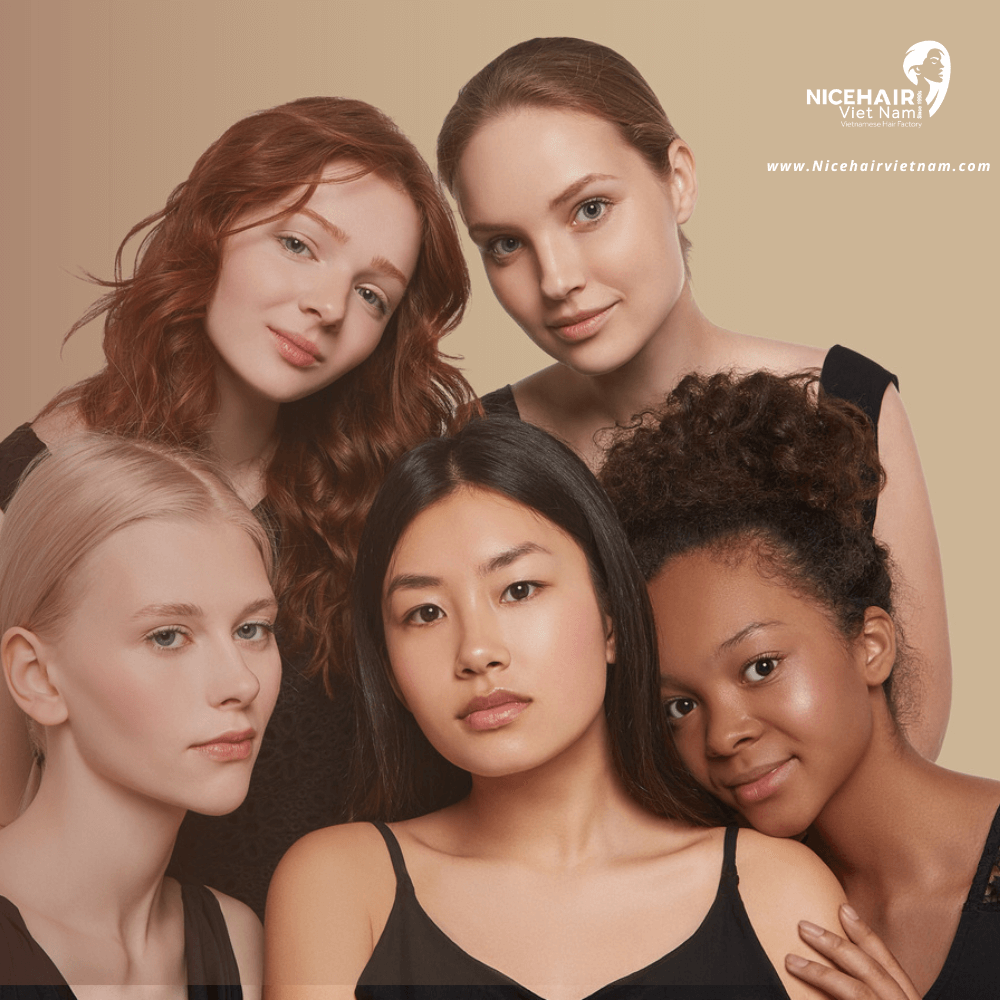
Human hair comes in a wide variety of natural colors, ranging from dark black to light blonde and everything in between.It’s important to note that within each color category, there can be various shades, undertones, and variations, making each person’s hair unique and beautiful in its own way. However, among all natural hair shades, unprocessed blonde human hair is rare and in highest demand.
Texture
Artificial hair
Artificial hair exhibits a range of textures, spanning from sleek and straight to intensely curly or kinky. The specific names of curl patterns may differ across brands, and the assortment of curl patterns achievable with synthetic hair is virtually limitless. Here are a few examples of packaged textures available:
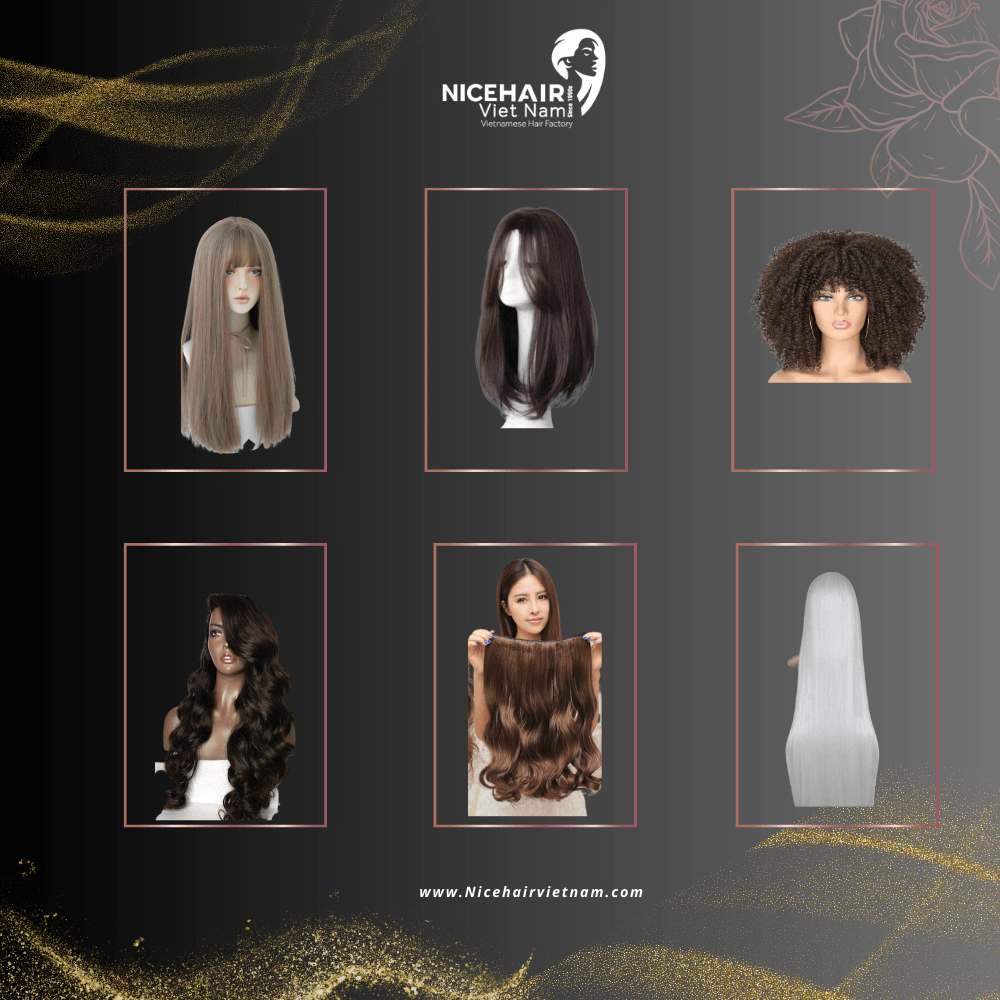
- Silky straight – straight and smooth, resembling natural straight hair.
- Yaki – straight, usually mimicking the texture of relaxed Afro-Caribbean hair.
- Deep wave – tighter and more defined waves, providing a voluminous and glamorous effect.
- Loose deep wave or romance wave – looser version of the deep wave, softer for a more natural look.
- Kinky curly (very tightly coiled “s” or “z” shaped curl pattern ) – a highly textured and voluminous look and often used to recreate the look of natural Afro-Caribbean hair.
Human hair
Human hair possesses a wide range of textures, spanning from silky straight to exceptionally curly or kinky, as well as all the naturally occurring textures that fall in-between. The specific curl patterns can vary from person to person, resulting in limitless possibilities for curl patterns with genuine, unprocessed hair.
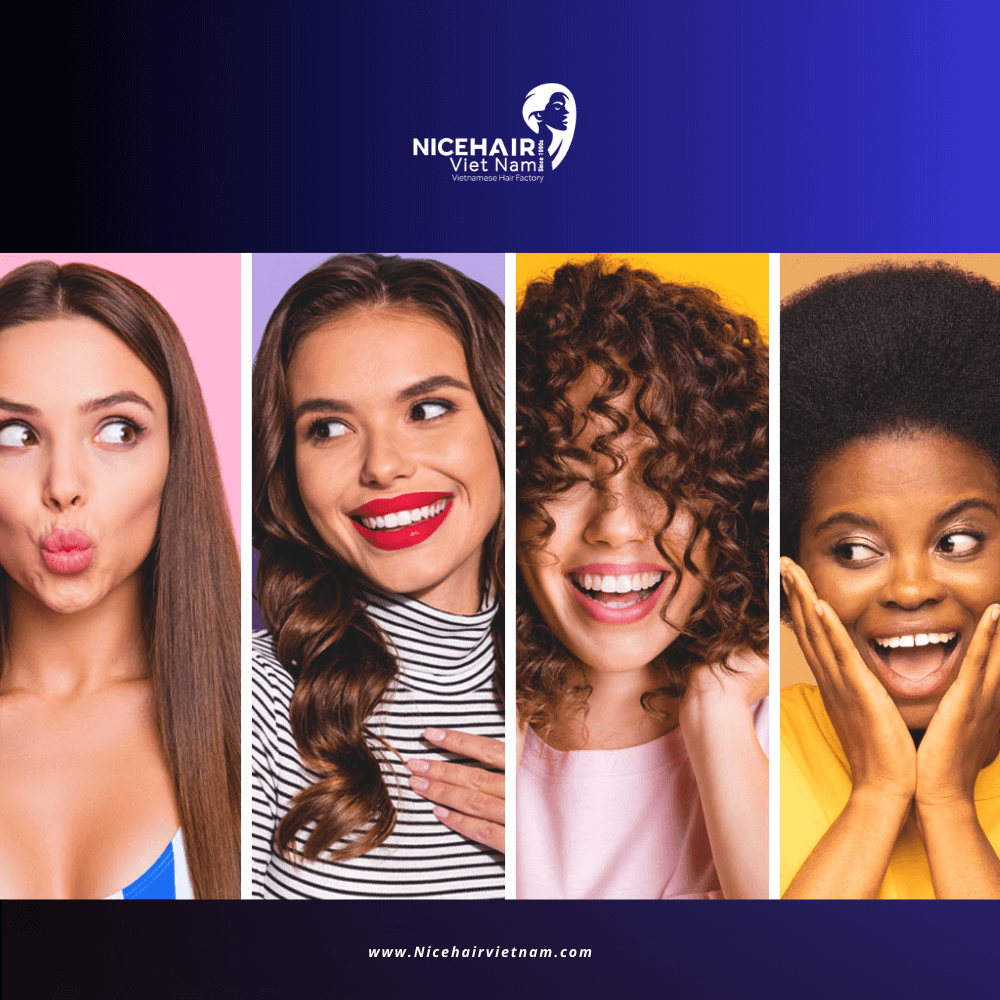
- Straight: Straight hair has a smooth texture without any noticeable waves or curls. It is typically shiny and reflects light easily.
- Wavy: Wavy hair has gentle, loose waves that can range from subtle to more pronounced. It falls between straight and curly hair in terms of texture.
- Curly: Curly hair has well-defined curls that can range from loose to tight. The curls can be in the form of spirals, coils, or ringlets, giving the hair a bouncy and voluminous appearance
Afro-textured hair
- Each strand of this hair type grows in a tiny, angle-like helix shape.
Combination
- Some individuals may have a combination of different textures throughout their hair. For example, they may have straight hair near the roots and wavier or curlier hair towards the ends.
Types of artificial hair
- The most popular and widely available form of hair is commonly referred to as premium hair. It can be found in most beauty supply stores and online. Premium hair is created by interweaving the roots and tips of hair strands, which can lead to tangling. This tangling occurs when the opposing cuticle layers catch onto each other. Despite this tendency, premium hair remains a popular choice due to its affordability.
- Premium hair is available in two main types:
Regular Premium Hair
- This type is generally the least expensive option. The cuticles are present in different directions, which contributes to the hair’s propensity to tangle.
“Tangle-Free” Premium Hair
- This type of premium hair undergoes a chemical process where the cuticles are removed using an acid bath. This treatment reduces friction between the hair strands, resulting in a tangle-free experience. To provide the appearance of natural, healthy hair, a laminate is applied to the hair, giving it a shiny and silky look.
It’s important to note that while “tangle-free” premium hair offers reduced tangling, it may still require regular maintenance to keep it in optimal condition.
Synthetic fiber
- This is the most common type of artificial hair and is made from synthetic materials such as kanekalon, toyokalon, or modacrylic fibers. Synthetic fibers are designed to mimic the look and feel of natural hair and are available in a wide range of colors and textures.
Futura Fiber
- Futura is a type of heat-friendly synthetic fiber that is known for its ability to handle heat styling up to 400 °F (200 °C) [2]. It can be curled, straightened, and styled using heat tools, providing more flexibility in styling options.
Human hair
The human hair shaft is made up of dead, hard protein, called keratin, in three layers. The inner layer is called the medulla and may not be present. The next layer is the cortex and the outer layer is the cuticle. The cortex makes up the majority of the hair shaft. The cuticle is formed by tightly packed scales in an overlapping structure similar to roof shingles.
How fake hair is done
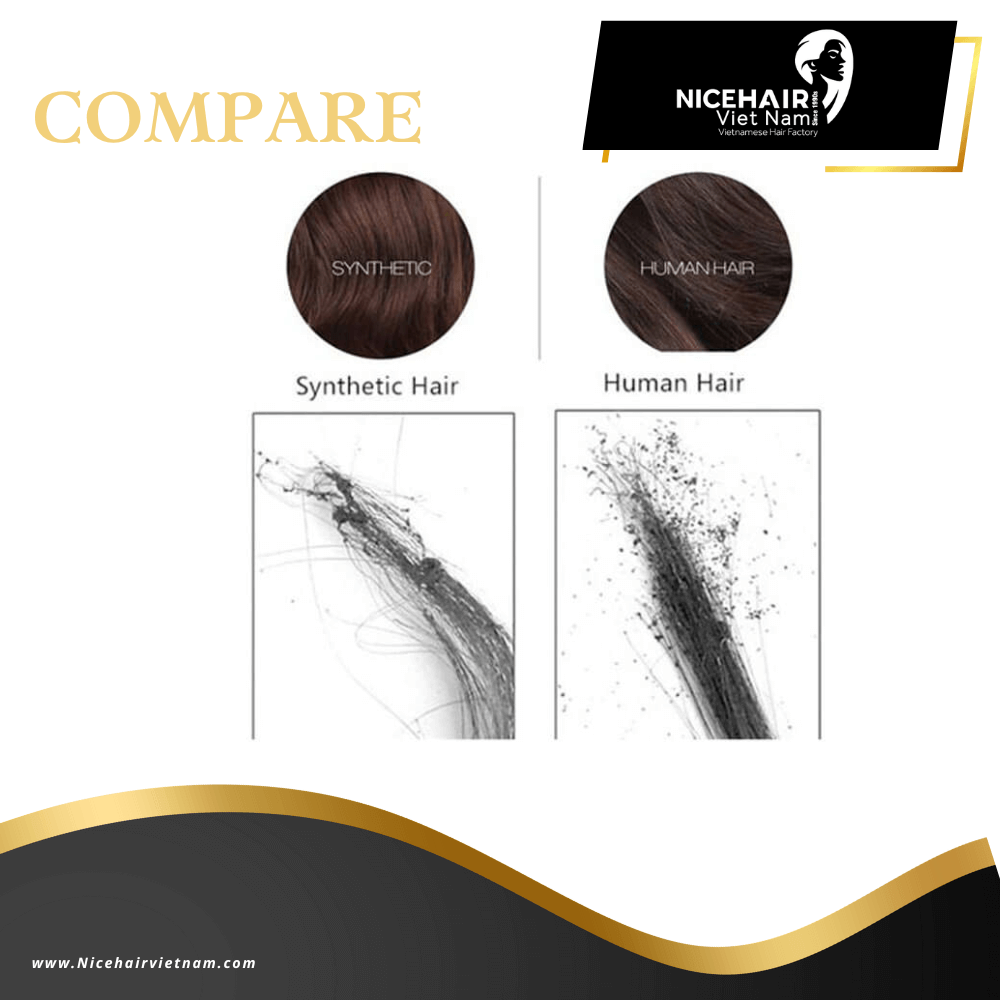
Installation methods of artificial hair integrations

Pinchbraid extensions were introduced in the 1980s as a method of artificial hair integrations. They involve attaching individual locks of hair to the natural hair using a durable upholstery thread, creating a secure and long-lasting attachment.

Tape-in hair extensions provide a semi-permanent solution, offering a duration of four to eight weeks. They allow for gentle combing and washing while the extensions are worn. To maintain the artificial hair integrations part in optimal condition, it is recommended to use specialized shampoos, conditioners, and styling products. When it comes to removal, glue remover is applied to facilitate the process, while installation can be easily accomplished using liquid adhesive or glue tape.

Clip-in weaves, also known as clip-in hair extensions, are widely favored for enhancing the length and volume of natural hair. They are usually offered as a single contoured piece that can be easily divided into multiple layers, enabling the creation of distinct sections on the user’s head. While these extensions commonly come with pre-sewn clips for effortless attachment, they can also be obtained separately and sewn onto the hair either by the individual or a professional stylist.The clip-in extension technique is the least permanent option among other methods of artificial hair integrations that eliminates concerns like traction alopecia often associated with glue extensions. Clip-in extensions feature a hair weft equipped with small toupée clips that are sewn onto it. Typically, a set of clip-in extensions comprises approximately eight strips of human hair in various widths. The installation process involves carefully sectioning the hair, placing each weft onto the corresponding section with the clips open and facing the scalp, and securely snapping each clip into place. For added grip and security, lightly backcombing each section can be beneficial. Clip-in extensions can be worn throughout the day, although some individuals prefer to remove them before sleeping.

Bonding is a weaving method of artificial hair integrations that offers a shorter duration compared to sew-in weaving. It involves the application of hair glue to a section of wefted hair and then onto a person’s natural hair. Special hair adhesives are utilized in bonding to safeguard the natural hair from damage. This technique is commonly employed and does not cause harm unless it is removed without proper guidance from a professional. It is recommended to keep weave bonding installed for up to 3 weeks, as the glue tends to loosen over time, diminishing the hair’s appeal.There are two types of bonding methods: soft bond and hard bond. Soft bond is crafted using latex/acrylic-based adhesives, making it flexible and comfortable to wear. On the other hand, hard bond refers to bonding treatments where the adhesive contains cyanoacrylate, commonly known as super glue. Hard bond adhesives have a longer lifespan compared to soft bond adhesives because they are not water-based and are therefore less prone to deterioration. However, the rigidity of hard bond adhesives makes them less comfortable than soft bond adhesives. Generally, these bonded attachments last 4-6 weeks before a maintenance appointment is required.

The fusion method involves using a specialized machine, similar to a hot glue gun, to attach human hair extensions to individual strands of the natural hair. This technique allows for a truly authentic look by working with small sections of the hair, usually measuring about 1/8 to 1/4 inch squared. Alternatively, fusion attachments can be achieved using pre-tipped hair with a keratin adhesive. A heat clamp is then employed to melt the adhesive, securely attaching the extension hair to the natural hair. With fusion weave, it is possible to wash the hair frequently and use regular hair products, including gels. However, this technique is quite time-consuming, often taking 3 or more hours. The extensions need to be re-positioned every 2-3 months as the natural hair grows. It is important to note that due to the chemicals in the glue and the application of heat, the fusion method can be more damaging to the natural hair and may lead to hair loss and scalp irritation.
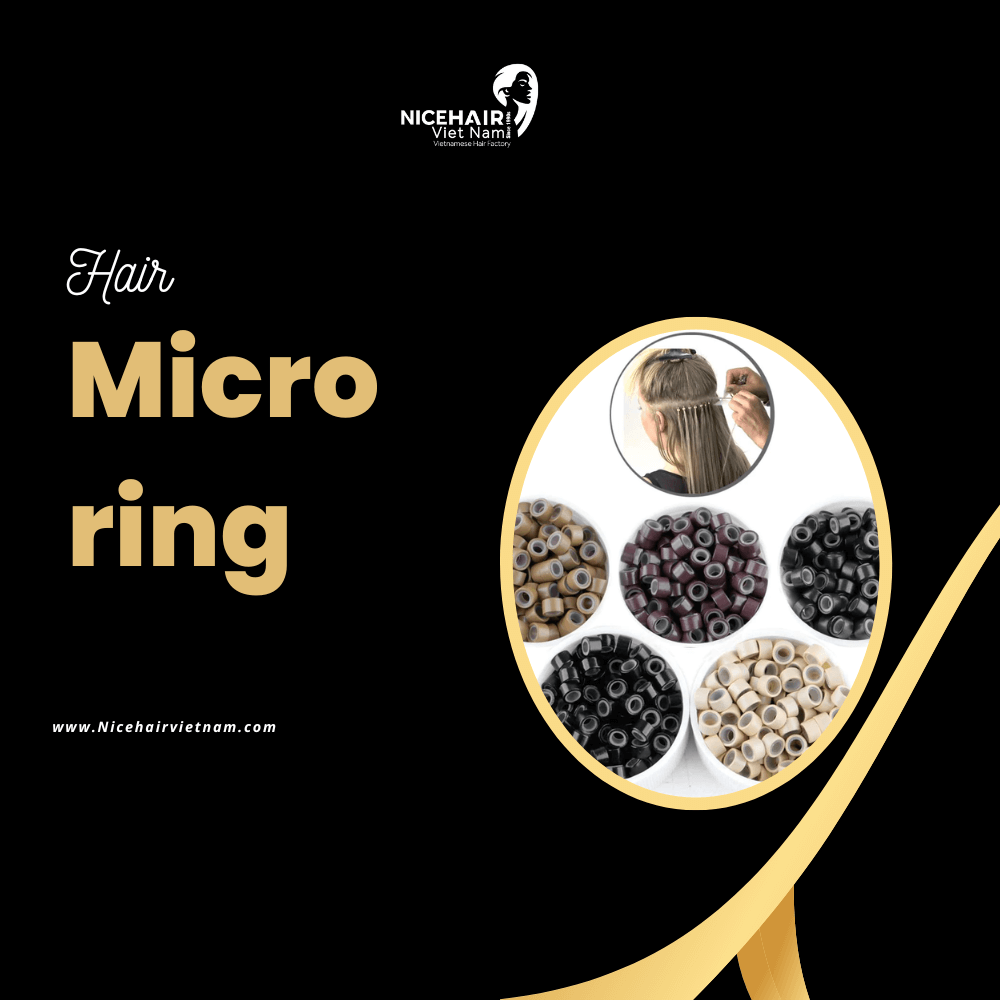
Micro ring extensions, also known as micro-bead or micro loop extensions, utilize small metal rings or beads, typically made of aluminum. These beads may be lined with silicone to enhance their grip on the extension hair. They are attached to small sections of the natural hair and tightened using a special tool that clamps the bead around the natural hair.
The micro-beads are designed to be discreet and not easily visible during regular use. Similar to other methods, micro ring extensions require re-positioning every two to three months as the natural hair grows, causing the beads to move away from the scalp.
Micro ring or micro bead hair extensions are known for causing less damage compared to certain types of extensions since they don’t require heat or adhesives when applied correctly and properly cared for. Nowadays, there is a wide range of sizes available for micro rings or beads, typically ranging from approximately 1.5 to 5.5 mm (0.059 to 0.217 in) in diameter. The size of the micro rings or beads can affect the weight of the extensions, the overall feel, and their visibility once installed. In fact, some micro beads are so small that they closely resemble a non-surgical hair transplant. It is the responsibility of the stylist to assess the client’s hair length and texture and determine the most suitable size of micro rings or beads before proceeding with the installation on the head.
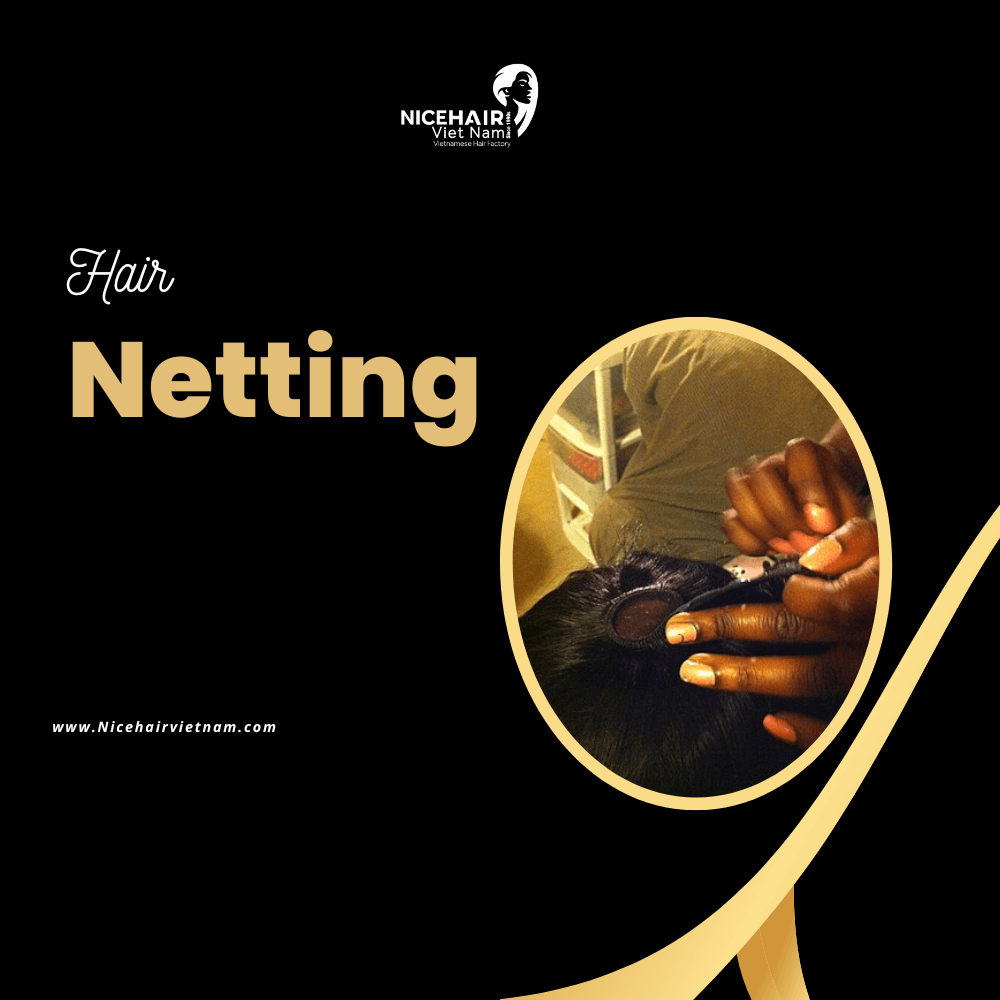
Netting is a hair extension technique that involves braiding the natural hair and securing it under a thin and breathable net. This net serves as a flat surface onto which stylists can weave the extensions. The process begins by braiding the person’s hair, after which a hair net or cap is placed over the braided hair. Netting offers more flexibility compared to track placement because it allows the stylist to sew or glue the hair wefts onto the net, providing different attachment options. One of the advantages of netting is that it is a relatively faster technique, typically taking around 2-4 hours to complete, making it a time-efficient choice.

Lace fronts represent the latest advancement in weave extensions. They are crafted from a nylon mesh material shaped into a cap and meticulously hand-ventilated by knotting individual strands of hair into the small openings of the cap. This technique provides a more natural and seamless flow of hair, setting it apart from traditional extensions. Lace fronts are available in various styles, including straight, wavy, and curly. They can be woven into the hair or attached to the hairline using special adhesives. Precise measurements of the head are taken to ensure a proper fit, and the expertise of a professional is recommended for optimal placement, as it involves advanced weaving and hair extension techniques. This method is popular due to its ability to access specific parts of the scalp, allowing for greater versatility.

Tracking is a widely used hair weaving technique that involves braiding the individual’s natural hair. It is recognized for its efficiency and ability to produce long-lasting results compared to other methods. While it may limit regular hair maintenance, it provides a strong and reliable foundation. The hair is meticulously braided in horizontal or vertical sections across the scalp, starting from the bottom and ensuring a seamless and even base. These braids act as anchor points to securely sew the hair weft extensions onto. For a full head weave, all of the hair can be braided or protected with a net prior to attaching the extensions. The number of tracks created depends on the desired aesthetic and the unique style preferences of the individual.
Artificial hair integrations techniques
The commonly used term “tracks” in hair weaving refers to the traditional and enduring method known as the “track and sew” technique. In this method, cornrows are braided in the desired direction of the hair fall, whether towards the face or away, with or without a part. These tracks form the foundation that determines the final look. Wefts of hair are then sewn onto these braids using a specially made needle, which can be curved or straight. Specially colored threads are available to match the hair color being integrated, with darker hair typically using darker thread. It is important to note that braiding the hair with excessive tension can lead to the risk of traction alopecia.
Alternatively, wefts can be bonded directly to the client’s hair using special bonding glue. However, caution must be exercised to avoid bonding the wefts directly to the scalp, as it may cause sensitivities in some individuals. Patch tests are often recommended as per the manufacturer’s instructions. The use of glue has become less popular due to the discovery of its potential to cause severe and sometimes permanent health issues such as headaches, bald spots, and dermatitis [3].
The “invisible part” technique is employed by hair stylists to create a seamless blend, making it appear as if the extension is growing directly from the person’s scalp. This technique can be achieved through either the sew-in or glue method [4]. It provides a long-lasting attachment of commercial hair to the natural hair and typically takes around an hour to apply. The result can last approximately 8 weeks.
Bulk hair extensions can be bonded to the hair using various methods, including clips and adhesive. In South East Asia, a practical method called “lengthening-re-bondage” has been used since the mid-19th century. This method involves two treatments: re-bonding and ironing in the first treatment, followed by gentle pulling and tugging of the hair in the second treatment. These treatments effectively lengthen the hair without causing significant damage.
For those who prefer to avoid bonding, bulk hair extensions can be added using thread. This method of artificial hair integrations is suitable for individuals with excessively oily hair or those who need to wash their hair daily. Adding hair extensions with thread helps prevent damage to the natural hair and protects the attachment areas from external elements such as heat, oils, and water.
How to care for your synthetic hair?
Shampooing

- Use a gentle, sulfate-free shampoo specifically designed for hair extensions. Avoid shampoos with harsh chemicals or high alcohol content as they can damage the extensions.
- Before shampooing, carefully detangle the hair using a wide-toothed comb or a brush specifically designed for extensions. Start from the ends and work your way up to the roots to prevent tangling and pulling.
- Wet the hair with lukewarm water and apply a small amount of shampoo. Gently massage the scalp and roots, avoiding rough scrubbing, as this can loosen the extensions.
- Rinse thoroughly with lukewarm water until all the shampoo is removed. Be sure to rinse the hair in a downward motion to prevent tangling.
- Apply a conditioner designed for extensions, focusing on the mid-lengths and ends. Avoid applying conditioner directly to the roots or the attachment points of the extensions.
- Leave the conditioner on for a few minutes, then rinse thoroughly with lukewarm water.
- Gently squeeze out excess water from the extensions using a towel. Avoid rubbing or wringing the hair, as this can cause damage or tangling.
- Allow the extensions to air dry or use a low heat setting when blow-drying. Avoid using high heat as it can weaken the bonds or cause damage to the hair.
Styling
- Before styling, make sure the extensions are completely dry to avoid damage.
- Use heat styling tools such as flat irons, curling irons, or hot rollers on a low to medium heat setting. Avoid using high heat directly on the bonds or attachment points.
- Apply a heat protectant spray to the extensions before using any heat styling tools.
- When brushing or combing the extensions, start from the ends and work your way up to the roots. Use a wide-toothed comb or a brush specifically designed for extensions to prevent tugging or pulling.
- Avoid excessive brushing or combing, as it can cause tangling or loosen the extensions.
- Use styling products specifically formulated for extensions, such as leave-in conditioners or serums, to keep the hair moisturized and protected.
- Avoid using heavy or oil-based styling products near the roots or attachment points, as they can weaken the bonds or cause slippage.
Remember, it’s essential to follow the specific care instructions provided by the hairstylist or the manufacturer of your artificial hair integrations. Proper maintenance and gentle handling will help prolong the lifespan of your extensions and keep them looking healthy and beautiful.
References
- Ireland, Jae. “About Hair definitely making it a “staple in the beauty and glamour” industry”. Retrieved 29 March 2012.
- Gninyomo, L. ”What Are Hair Types Really Like?” . sheenmagazine.com. Sheen Magazine. Retrieved 10 April 2023.
- Tarrant, Jacqueline. “Is Hair Glue Hazardous To Your Health?”. BlackDoctor.org. BlackDoctor. Retrieved 2 September 2018.
- .Ruddock, Alma. “How To Do “Invisible Part” Weaves – Two Methods Of Installation”. blackhairinformation.com. Black Hair Information. Retrieved 2 September 2018.

